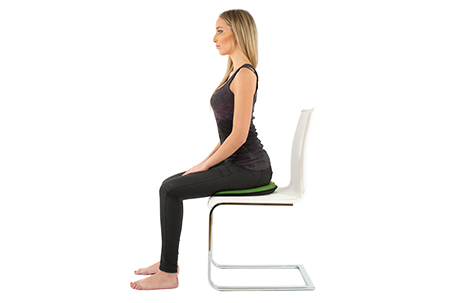Exercises for Healthy Sitting
1. Isometric strengthening of the cervical spine from behind
Place your arms behind the head. Push your chin backward and loosen your shoulders. Push your head against the hands. As you breathe in hold the position for 7 seconds. Release the tension as you exhale.
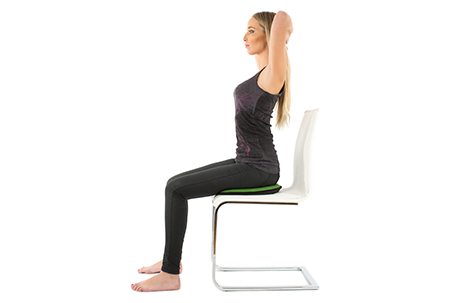
2. Isometric strengthening of the cervical spine from the front
Take the same position as in the first exercise. Only this time put your hands on the forehead. Push your forehead against your palms. Breathe in and hold the position for 7 seconds. Release the tension as you exhale.
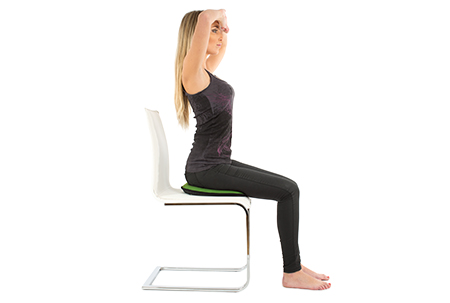
3. Strengthening of shoulder blade and upper back muscles
Take a correct sitting position with the arms bend in the elbow and take a breath. As you exhale, pull the blades and shoulders toward the spine and as down as possible. Try to pull the blades to form a V shape. Remain in the position for a few seconds and then release the tension.
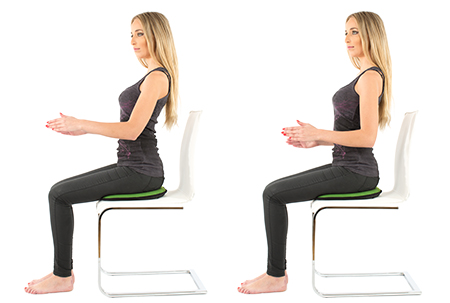
4. Overall relief
Spread your legs and place your hands on your knees. Slowly start to roll forward in your chair. Begin by releasing cervical spine, followed by thoracic and lumbar spine and reach to the ground. Try to touch the ground with your fingertips. Stay in the position for a moment. Gradually begin to rise from the lumbar spine through the thoracic spine and then straighten the cervical spine. When leaning forward and rolling the spine, you should feel each vertebra, one after another, release downward. This also applies for straightening of the spine upwards. When practising this exercise on a chair with wheels, make sure the chair is secured against slipping and falling.
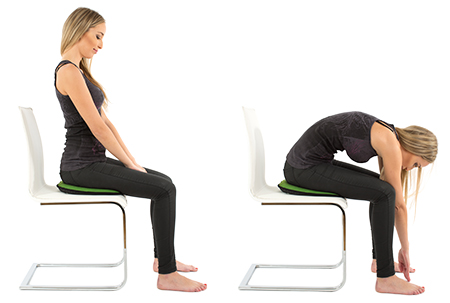
5. Exercise aimed aimed to relief lumbar spine section, tail bone, and pelvic floor
Slightly spread your legs and place your hands on your thighs. Straighten your back, push your chin backward, and push the shoulders back and down. As you inhale, slightly lean forward using your core muscles. As you exhale, contract your gluteal muscles and the pelvic floor and then release the tension.
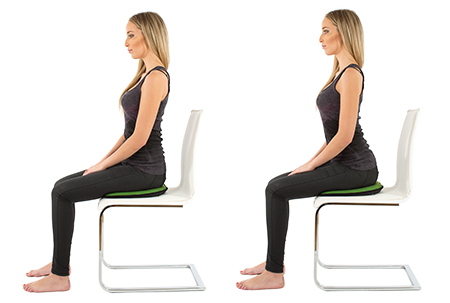
6. Exercise for tailbone relief
The default position on Dvectis pad is sitting, with your hands stretched out slightly downward in the shape of the letter "A". Sitting in this position, take a deep breath. As you exhale, push one hip to the side and contract your pelvic floor and abdominal muscles. Try to keep your core in the same position as you push the hip to the side. Repeat the exercise on the opposite side.
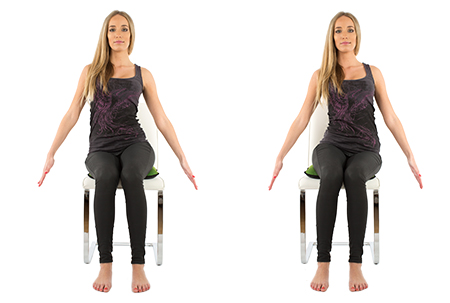
7. Hip circling on dynamic-directional pad Dvectis
The default position on Dvectis pads is sitting in your upright position. Straighten your back, push your chin backward, and push the shoulders back and down. This exercise mostly involves hip circling from the belly button down. Put your arms loosely between the thighs. As you inhale, contract the abdominal buttocks and pelvic floor muscles and circle the pelvis clockwise. Perform this exercise for at least 7 seconds. As you exhale, relax the muscles and then repeat the exercise counter-clockwise. Make sure you sit in upright position. Never exercise with your back slouched.
